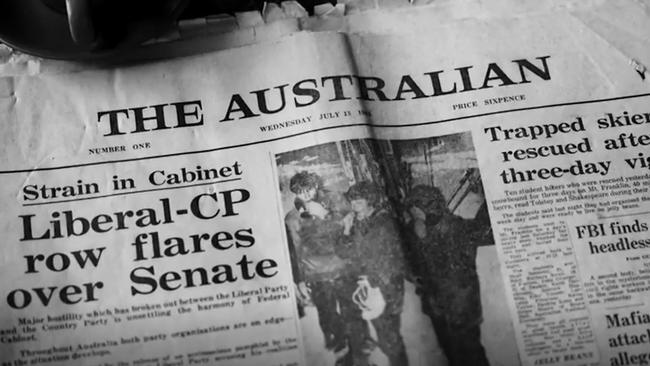I’ve spent a lifetime in the news business. My, how it’s changed
Having been in the news business since the age of 12, I fear the end of the newspaper. Who now gets their news, if that’s what you call it, from the traditional chip-wrapper type?

Having been in the news business since the age of 12, I fear the end of the paper newspaper. Though I am an online subscriber to quite a few, I prefer the traditional chip-wrapper type.
Most mornings as a kid, I dragged a billycart through the silent streets of East Melbourne on my daily paper round, tossing copies of The Sun and/or The Age into front gardens or in the general direction of front doors. And after school, I was a street-corner paperboy jumping on and off moving trams. Two years later I graduated to writing columns for The Guardian, using the pseudonym Avoca (can’t remember why). No, not THAT Guardian. I’m talking about the Communist Guardian, published in a back street of Melbourne.
A score of more respectable mastheads would follow until, in my octogenarian dotage, I linger on the back page of The Weekend Australian Magazine, offering my loony left opinions in both paper and online editions.
Newspapers were once called fish-wraps because they were recycled to wrap the fish ‘n’ chips of loving memory. They also served as liners for kitchen drawers and the bottom of budgie cages. Speaking of bottoms, they traditionally served as cheap toilet paper too. Torn into smallish pieces, bound with pieces of string and hung from nails in dunnies. Try that with your electronic subscription. (Presumably, this traditional form of recycling was recycled during the Toilet Paper Wars of the pandemic.)
We’re told that the era of the newspaper is ending. But where and when did it begin? The Ancients didn’t have them. There was no The Roman or The Weekend Roman. Ditto the Ancient Egyptians or Greeks. (Unless you include clay tablets. Imagine being a paperboy dragging them around in your billycart, and trying to lob them onto front lawns.)
That early form of social media, the Town Crier, was arguably a vocal and very local version. But it seems the newspaper was born in my beloved Venice. Hand-written and widely read in the city from 1565, it was jammed with news about Venetian and Italian politics, wars, and stuff like that.
Printed papers? They first appeared as weeklies in Germany from 1605. Arriving in France, they were heavily censored – the “freedom of the press” is a more recent notion. From London to Boston, business boomed, but it took the invention of the high-speed printing press to make mass production and mass reading possible. From weeklies, it became standard to write and print dailies.
In London, The Times showed it was possible to print – at speed – on both sides of the page. Enter the era of the penny paper, pioneered by the Boston Transcript from 1830. The telegraph was speeding things up by the late 1840s, as did the advent of cheap wood-pulp paper. Behold the modern masthead, made feasible not only by changing technology but also by rapidly rising levels of literacy.
Thanks to social media and addiction to the iPhone, I suspect what we call literacy is now declining, into the language of abbreviation and the hieroglyphs of emoji. And the news itself no longer seems addictive – it’s certainly less popular with the young. Who now gets their news, if that’s what you call it, from papers?
And I head for the exit. Dragging a billycart.








To join the conversation, please log in. Don't have an account? Register
Join the conversation, you are commenting as Logout